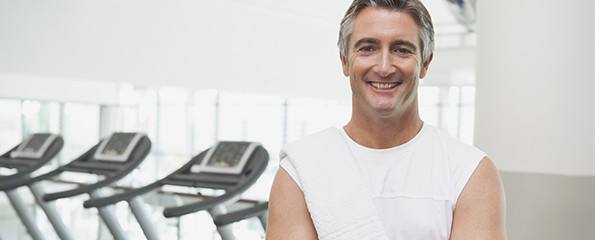Exercising for better health in prostate cancer therapy
After being diagnosed with prostate cancer, Phil, Bob and Derek were invited to join a research study about how regular exercises influences the side effects of hormone therapy for men during prostate cancer treatment. They all decided to participate in the study and joined an exercise group.
We spoke to them about their experiences, not only getting fit and finding support from other guys who were going through the same thing, but also about what it’s like to be involved in research.
Deciding to exercise through prostate cancer treatment
Phil had a fairly active lifestyle, running four wheel drive expeditions. But none of the guys could be described as gym junkies before they joined the exercise program. In fact the opposite was closer to the truth for Bob and Derek. But they decided to give exercise a go after being invited to participate in the research by their doctors.
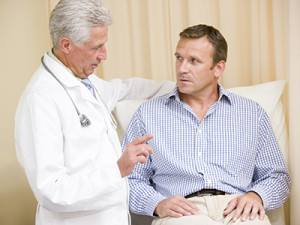 “At my initial visit to the doctor I was asked if I would like to participate in a research study being conducted by a university about the role of exercise in reducing some of the side effects of prostate cancer treatment,” Bob told us.
“At my initial visit to the doctor I was asked if I would like to participate in a research study being conducted by a university about the role of exercise in reducing some of the side effects of prostate cancer treatment,” Bob told us.
Similarly Derek said he, “Heard from the doctor that they were conducting a research study into the effects of exercise on men who are on testosterone suppression therapy for prostate cancer. Even though going to the gym had not been a thing that I did, I decided to join the research study. When joining the group I had to make a commitment to exercise for twelve months.”
“My oncologist suggested I try an exercise program and I agreed,” Phil said. “The aim of the trial was to determine the benefits of targeted exercises on bone density and if improvements in strength and endurance would reduce the hormone therapy side effects.”
Bob said, “The prospect of exercise was a bit daunting at first as I had done little exercise over the past few years due to an operation on my right heel, 85 % of my tendon was removed. I was advised it would grow back but would take two or more years. So I stopped exercising and never got back into it. Some gentle prodding from my partner had started me exercising, but very minimally.”
“After thinking about some extra weight I’ve gained in the last few years since the heel operation, I decided I was happy to be involved. The invite to participate in this program appealed for my own wellbeing, but also because I was providing assistance to a research program which will benefit many people.”
Getting into an exercise routine
Despite his initial trepidation, Bob found out pretty quickly that a good workout is nothing to be scared of. “Even with the fatigue from hormone therapy I found I was coping with the workout and after about three weeks I was noticing I felt better, was stronger, lost weight, felt an increase in stamina. My bone density increased. I lost fat over the time even though I was taking the hormone therapy which typically increases fat to muscle ratio. There were no negatives at all.”
“It was not a boot camp approach, which I had experienced from an earlier attempt at a fitness regime, but a program tailored to each individual’s health and fitness state. We were monitored and managed closely and the exercise program tailored to where we were at physically in terms of fitness and health.”
Derek explained that, “The exercise program is the same for most of us but is dependent on the individual’s medical needs. For example if one of the guys has issues with bone damage then he will not be expected to do exercise that would cause problems.”
“We all did a set of exercises which were designed to minimise bone density loss,” Bob added. “These included skipping, hopping, jumping and bunny hops. Others like weights, treadmill and bike were individualised. We did the bone density exercises every day, then I would alternate the cardio and weights and do them every second day.”
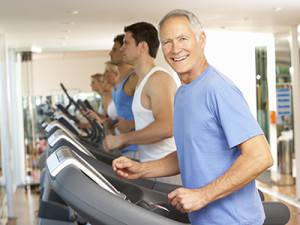 “They set the routine so we didn’t go over our limit. But they would increase the pace once in a while. It seemed that every time I was getting comfortable and starting to find the exercise easier my routine would be changed to a more intensive one.”
“They set the routine so we didn’t go over our limit. But they would increase the pace once in a while. It seemed that every time I was getting comfortable and starting to find the exercise easier my routine would be changed to a more intensive one.”
The other guys also found themselves enjoying the exercise routine. “I soon found that I looked forward to each session, and I particularly enjoy the supervision and advice that staff at the gym provide. I believe my overall fitness has improved,” Derek said.
“I looked forward to going to the gym three days a week to do my exercises, catch up with the team and discuss issues with them. I also enjoyed helping new participants in the exercise program when they were getting started,” Phil told us.
Being involved in research to improve understanding of prostate cancer
While getting their gym gear on, Phil, Bob and Derek were also being studied by a research group interested in the effects of exercise during prostate cancer treatment. “The study lasted twelve months and involved two groups,” Derek explained. “One started the exercise program when they commenced hormone treatment and the other after they completed the hormone therapy and radiation treatment. I was allocated to the group that started the exercise program prior to treatment.”
“As part of the study I was given calcium tablets to take for the entire twelve months. I was tested for general fitness and had bone density and body fat and muscle scans at the start of the research study and I had follow up assessments at three and six months. I had to put aside a full morning for each of these assessments. I also had blood tests for sugars, cholesterol and PSA [prostate specific antigen].”
Bob added, “At each review there was a 30-40 question survey. There were lots of pages and some had similar questions on different pages. The researchers were collecting a lot of information and I think it was going to different universities so they could all understand more about exercise and prostate cancer therapy.”
“I was happy about that, helping them to better understand the disease. Initially I got involved for selfish reasons, thinking that the research would help me get fit. But I was always committed and knew I needed to see it through. Once I was involved I wanted to be there and felt a commitment to the research and giving them full information for the six months.”
Exercise becomes an enjoyable and important routine
In the end the exercise continued well after the research finished. “After the initial twelve months exercising as part of the research project I joined the gym because I could see the benefits of the program and I enjoyed the company of the other guys in the group. I exercise three times a week with other prostate cancer patients,” said Derek.
“Many of us have been going to gym for three years, something we probably would not have done if we hadn’t gotten involved. Together with other gym members from the prostate cancer research I have participated in two City to Surfs, Run for a Reason and Relay for Life, all of which I would not have done before commencing to the gym.”
Bob also continued exercising. “At the end of the research program I signed up for a twelve month membership, as I was enjoying the workout and the company of many others going through the same process at the gym. I’d always enjoyed being able to get advice from the research team and even though I’ve finished participating in the research the supervisors still give advice and time to help me and answer any questions I have.”
“It’s a habit now,” said Phil. “Despite the trial having been completed most members of the trial have continued attending the gymnasium. We have also had many lunches, barbecues and evening meals together. Wives and partners are encouraged to attend and this has created not only a new group of friends but the sharing of information and understanding of prostate cancer, treatments and other related issues.”
“If someone is unable to attend the gym regularly other group members soon make contact to see how you are going. It is almost like failing to attend school and you have to produce a note explaining your absence!”
More than just exercise, a social and support group as well
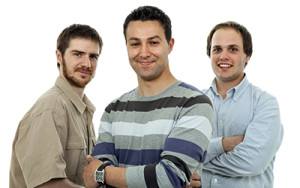 “That type of care and support is an added benefit of the exercise program,” said Phil. “The comradery and support network that developed amongst the group of participants in the trial was so important.”
“That type of care and support is an added benefit of the exercise program,” said Phil. “The comradery and support network that developed amongst the group of participants in the trial was so important.”
Derek agrees that the friendship and support are just as important as the exercise. “The big bonus for me has been the comradery developed amongst the guys and the willingness of all to share their journey. There was a group of guys all at different stages of treatment so we shared our experiences which meant we were better informed. In many cases guys who were afraid of the unknown soon became comfortable with their treatment.”
“We’ve established an informal support network and break the norm for guys. We talk openly about how we are going and our individual treatments. This is a huge benefit to the newcomers who are just starting out and scared by the treatment. In our group there are guys who have had the prostate removed and cancer has returned, guys who have had brachytherapy and those like myself who have had image guided external beam radiation. So between us we have lots of different experiences to share.”
Bob added that, “The fellowship and friendship has extended to our wives and partners and we now have social occasions involving all, as well as coffee every Wednesday after gym and the ladies catch up for lunch. When support is needed it is there, otherwise we are a group of friends sharing time socially.”
“At first we didn’t catch up outside but that happened about three months later and I was really delighted when we started getting together socially.”
“I have nothing but praise for this program. I am reminded of the saying ‘out of something bad comes something good’ and that has certainly been my experience. Yes I now have cancer which will need to managed for the rest of my life, however the benefits of friendship, comradeship, wellness and fitness far outweigh the impact of having prostate cancer.”
Advice about exercise and prostate cancer treatment, from one guy to another
Phil, Bob and Derek have all been exercising regularly and they’ve all come out the other side of prostate cancer treatment (and the research study) to see better days. So what would they say to other guys going through a similar thing?
“Don’t convince yourself that exercise is not for you because you are too old or because you have been diagnosed with cancer,” Derek advises. “You are not the only male to have prostate cancer so get out there and get involved, preferably with a group of guys in a similar position. You will come to realise that there is no good worrying about prostate cancer because worrying never cures anything, but in my experience exercise has helped me during my treatment.”
In addition to believing in the benefits of exercise, Phil also has a word of advice for guys considering getting involved in a research study. “I am a firm believer in participating in trials, awareness raising and sharing my journey with others. If through my actions I can get just one man to have a digital examination and if cancer is found, and through treatment he goes into remission, then all my efforts would, in my opinion, be successful. I encourage other men who are eligible to get involved in research so diseases can be better understood and treated.”
Bob agrees. “Be part of research for yourself but also to help other men in the future. Prostate cancer is under-researched, so participating in a project like this helps better understand the disease and improve treatments and ways of dealing with their side effects.”
More information
 | Read more about Phil, Bob and Derek and their experiences coping with fatigue, reduced libido and other side effects in Prostate Cancer Treatment Side Effects- Three guys find ways to cope and beat cancer. |
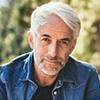 | To learn more about how other men are dealing with this disease, visit Aussie men share their prostate cancer experiences. |
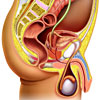 | For more information on prostate cancer, including diagnoses, types of treatments, and some useful tools, videos and animations, see Prostate Cancer. |
Dates
Tags
Created by:

 Login
Login